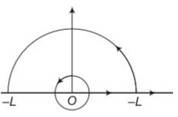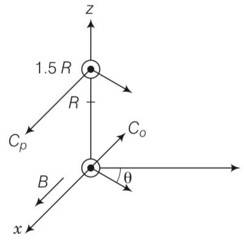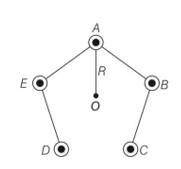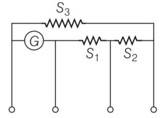Moving Charges and Magnetism
Get insights from 125 questions on Moving Charges and Magnetism, answered by students, alumni, and experts. You may also ask and answer any question you like about Moving Charges and Magnetism
Follow Ask QuestionQuestions
Discussions
Active Users
Followers
New answer posted
6 months agoContributor-Level 10
This is a Short Answer Type Questions as classified in NCERT Exemplar
Explanation – here, the condition of magnetic resonance is violated.
When the frequency of radio frequency field were doubled, the time period of the radio frequency field were halved. Therefore, the duration in which particle completes half revolution inside the dees, radio frequency completes the cycle.
Hence, particle will accelerate and decelerate alternatively. So the radius of path in the dees will remain same.
New answer posted
6 months agoContributor-Level 10
This is a Short Answer Type Questions as classified in NCERT Exemplar
Explanation- yes, the magnetic force differ from inertial frame to frame. The magnetic force is frame dependent.
The net acceleration which comes into existing out of this is however, frame independent for inertial frames.
New answer posted
6 months agoContributor-Level 10
This is a Short Answer Type Questions as classified in NCERT Exemplar
Explanation- dW=F.dl=0
As dl = vdt
dW= Fvdt
dW= f.v=0
New answer posted
6 months agoContributor-Level 10
This is a Long Answer Type Questions as classified in NCERT Exemplar
Explanation- (a) Suppose the five wires A, B, C, D and E be perpendicular to the plane of paper at locations as shown in figure.
Thus, magnetic field induction due to five wires will be represented by various sides of a
closed pentagon in one order, lying in the plane of paper. So, its value is zero.
(b) Since, the vector sum of magnetic field produced by each wire at O is equal to 0.
Therefore, magnetic induction produced by one current carrying wire is equal in
magnitude of resultant of four wires and opposite in direction.
Therefore, the field if current in one of the wi
New answer posted
6 months agoContributor-Level 10
This is a Long Answer Type Questions as classified in NCERT Exemplar
Explanation- iG (G) = (I1-IG) (S1+S2+S3) for I1= 10mA
iG (G+S1) = (I2-IG) (S2+S3) for I2= 100mA
iG (G+S1+S2) = (I3-IG) (S3) for I3= 1A
S1= 1W, S2= 0,1W and S3= 0.01W
New answer posted
6 months agoContributor-Level 10
This is a Long Answer Type Questions as classified in NCERT Exemplar
Explanation- B (z) points in the same direction on z-axis and hence, J (L) isa monotonically function of L so B.dl = B.dl as cos 0 = 1
(b) but when L
So B 1/r3
(c) the magnetic field due to a circular current carrying loop of radius in the xy plane with centre at origin at any point lying at a distance of from origin.

B=
Z=Rtan
dz=Rsec2
=
New question posted
6 months agoNew answer posted
6 months agoContributor-Level 10
This is a Long Answer Type Questions as classified in NCERT Exemplar
Explanation- B (z) points in the same direction on z-axis and hence, J (L) isa monotonically function of L so B.dl = B.dl as cos 0 = 1
(b) but when L
So B 1/r3
(c) the magnetic field due to a circular current carrying loop of radius in the xy plane with centre at origin at any point lying at a distance of from origin.

B=
Z=Rtan
dz=Rsec2
=
New answer posted
6 months agoContributor-Level 10
This is a Long Answer Type Questions as classified in NCERT Exemplar
Explanation- as we know magnetic moment = nIA
For equilateral triangle M= nIA= 4I ( )
M= Ia2
For square, n=3 so total length of wire is 12a
M= nIA= 3I (a2) = 3Ia2
For regular hexagon of side a, n=2 so total length = 12a
M= nIA=2 ( )= 3 a2I
New answer posted
6 months agoContributor-Level 10
This is a Long Answer Type Questions as classified in NCERT Exemplar
Explanation- Since, B is along the x-axis, for a circular orbit the momenta of the two particles are in the y-z plane. Let P1 and P2 be the momentum of the electron and positron, respectively. Both traverse a circle of radius R of opposite sense. Let P1 make an angle? with the y-axis P2 must make the same angle.

The centres of the respective circles must be perpendicular to the momenta and at a distance R. Let the centre of the electron be at Ce and of the positron at Cp . The coordinates of Ce is
Ce= (0, -Rsin )
Cp= (0, -Rsin )
The circles of the two
Taking an Exam? Selecting a College?
Get authentic answers from experts, students and alumni that you won't find anywhere else
Sign Up on ShikshaOn Shiksha, get access to
- 65k Colleges
- 1.2k Exams
- 681k Reviews
- 1800k Answers


